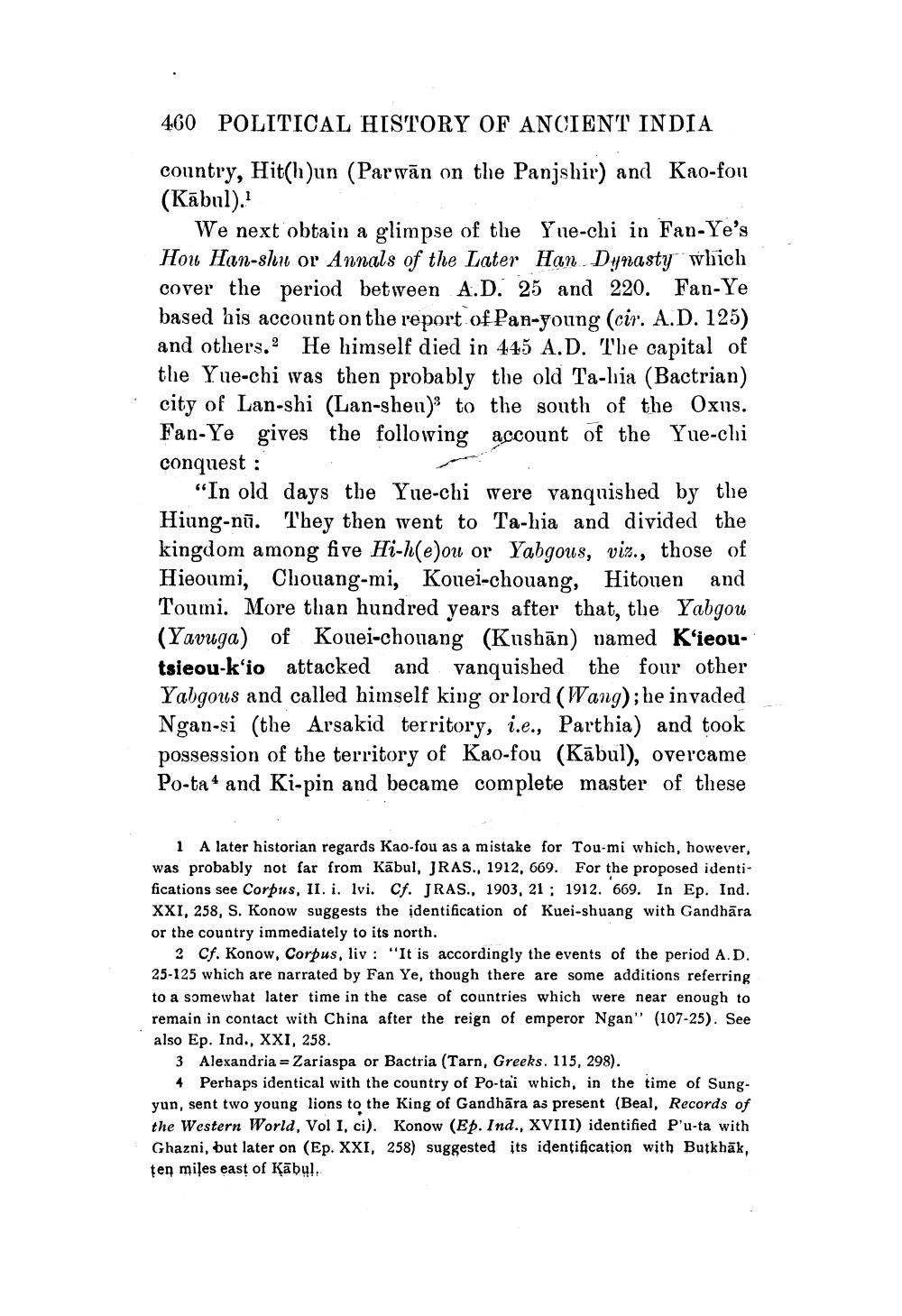________________
460 POLITICAL HISTORY OF ANCIENT INDIA
country, Hit(h)un (Parwān on the Panjshir) and Kao-fou (Kābul).
We next obtain a glimpse of the Yue-chi in Fan-Ye's Hou Han-shu or Annals of the Later Han Dynasty which cover the period between A.D. 25 and 220. Fan-Ye based his account on the report of Pan-young (cir. A.D. 125) and others. He himself died in 445 A.D. The capital of the Yue-chi was then probably the old Ta-lia (Bactrian) city of Lan-shi (Lan-shen)s to the south of the Oxus. Fan-Ye gives the following account of the Yue-chi conquest :
"In old days the Yue-chi were vanquished by the Hiung-nī. They then went to Ta-hia and divided the kingdom among five Hi-h(e)ou or Yabgous, viz., those of Hieoumi, Chouang-mi, Kouei-chouang, Hitouen and Toumi. More than hundred years after that, the Yabgou (Yavuga) of Kouei-chouang (Kushān) vamed K'ieoutsieou-k‘io attacked and vanquished the four other Yabgous and called himself king or lord (Wang); he invaded Ngan-si (the Arsakid territory, i.e., Parthia) and took possession of the territory of Kao-fou (Kābul), overcame Po-ta* and Ki-pin and became complete master of these
1 A later historian regards Kao-fou as a mistake for Tou-mi which, however, was probably not far from Kābul, JRAS., 1912, 669. For the proposed identifications see Corpus, II. i. lvi. Cf. JRAS., 1903, 21 ; 1912. 669. In Ep. Ind. XXI, 258, S. Konow suggests the identification of Kuei-shuang with Gandhāra or the country immediately to its north.
2 Cf. Konow, Corpus, liv : "It is accordingly the events of the period A.D. 25-125 which are narrated by Fan Ye, though there are some additions referring to a somewhat later time in the case of countries which were near enough to remain in contact with China after the reign of emperor Ngan" (107-25). See also Ep. Ind., XXI, 258.
3 Alexandria = Zariaspa or Bactria (Tarn, Greeks. 115, 298).
4 Perhaps identical with the country of Po-tai which, in the time of Sungyun, sent two young lions to the King of Gandhāra as present (Beal, Records of the Western World, Vol 1, ci). Konow (Ep. Ind., XVIII) identified Pu-ta with Ghazni, but later on (Ep. XXI, 258) suggested its identification with Burkhāk, ten miles east of Kābul.




